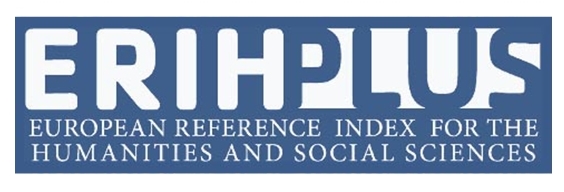‘Atrocious Lusts’: The Vampire and Transgressive Sexuality in Polidori, Le Fanu, and Rice
DOI:
https://doi.org/10.18485/bells.2023.15.14Keywords:
the Gothic, transgression, sexuality, vampirism, Interview with the Vampire, Carmilla, The VampyreAbstract
Gothic literature has always tackled and played with various anxieties present in contemporary culture, often projecting those anxieties onto the figure of the vampire. One of such ever-present themes that the Gothic deals with is sexuality and the fears of changing norms and moral values regarding it, coupled with anxieties related to shifting gender norms and family structures. This paper aims to give an overview of how the Gothic genre deals with transgressive sexuality and the breaking of gender norms. The works discussed here are selected based on how historically important and culturally prominent they are. ‘The Vampyre’ is the first prominent vampire story in English literature, and deals heavily with the titular vampire’s sexual voraciousness. ‘Carmilla’ is the first prominent Gothic story to explicitly deal with lesbianism, while Interview with the Vampire is the most culturally relevant vampire story, and the first prominent one to openly embrace homosexuality. These works are analysed and compared to gain insight into how the representation of transgressive sexuality in the genre changed over time.
Downloads
References
Barber, P. (1988). Vampires, Burial, and Death: Folklore and Reality. New Haven and London: Yale University Press.
Benefiel, R. C. (2004). The Gothic Perversion of the Nuclear Family in Anne Rice’s Interview with the Vampire. The Journal of Popular Culture, 38, 2(2004), 261–273.
Costello-Sullivan, K. (2013). Introduction. In: Costello-Sullivan, K. (ed), Carmilla: A Critical Edition. New York: Syracuse University Press, xvii–xxvi.
Fox, R. (2013. Carmilla and the Politics of Indistinguishability. In: Costello-Sullivan, K. (ed), Carmilla: A Critical Edition. New York: Syracuse University Press, 110–121.
Killeen, J. (2013). An Irish Carmilla? In: Costello-Sullivan, K. (ed), Carmilla: A Critical Edition. New York: Syracuse University Press, 99–109.
Le Fanu, J. S. (2007). Carmilla. New York, Dodo Press.
Marchand, L. A. (1976). Byron: A Portrait. London: Futura Publications Ltd.
O’Connor, A. (2005). Twists of Faith. The Los Angeles Times. 26.12.2005, https://www.latimes.com/archives/la-xpm-2005-dec-26-et-rice26-story.html
Polidori, J. W. (2008). The Vampyre. In: Scherf, K. and Macdonald, D.L. (eds), The Vampyre and Ernestus Brechtold, Peterborough: Broadview Press, 39–59.
Punter, D. (2013). The Literature of Terror: The Gothic Tradition. London and New York: Routledge.
Punter, D. and Byron, G. (2004). The Gothic. Malden: Blackwell Publishing Ltd.
Sedgwick, E. K. (1985). Between Men: English Literature and Homosocial Desire. New York: Columbia University Press
Scherf, K. and Macdonald, D. L. (2008). Introduction. In: Scherf, K. and Macdonald, D.L. (eds), The Vampyre and Ernestus Brechtold, Peterborough: Broadview Press, 9–31.
Schopp, A. (1997). Cruising the Alternatives: Homoeroticism and the Contemporary Vampire. The Journal of Popular Culture, 30, 4(1997), 231–243.
Signorotti, E. (1996). Repossessing the Body: Transgressive desires in ‘Carmilla’ and Dracula. Criticism, 38, 4(1996), 607–632.
Tracy, R. (1998). Sheridan Le Fanu and the Unmentionable. In: The Unappeasable Host: Studies in Irish Identities. Dublin: University College Dublin Press, 57–72. https://archive.org/details/unappeasablehost0000trac Last accessed on 24.05.2023.
Downloads
Published
Issue
Section
License
Copyright (c) 2023 Stefan Čizmar

This work is licensed under a Creative Commons Attribution-ShareAlike 4.0 International License.
Authors who publish with this journal agree to the following terms:
- Authors are confirming that they are the authors of the submitting article, which will be published (print and online) in Belgrade English Language and Literature Studies by the Faculty of Philology, University of Belgrade (Faculty of Philology, Studentski trg 3, 11000 Belgrade, Serbia). Author’s name will be evident in the printed article in the journal. All decisions regarding layout and distribution of the work are in hands of the publisher.
- Authors guarantee that the work is their own original creation and does not infringe any statutory or common-law copyright or any proprietary right of any third party. In case of claims by third parties, authors commit their self to defend the interests of the publisher, and shall cover any potential costs.
- Authors retain copyright and grant the journal right of first publication with the work simultaneously licensed under a Creative Commons Attribution-ShareAlike 4.0 International License that allows others to share the work with an acknowledgement of the work's authorship and initial publication in this journal.
- Authors are able to enter into separate, additional contractual arrangements for the non-exclusive distribution of the journal's published version of the work (e.g., post it to an institutional repository or publish it in a book), with an acknowledgement of its initial publication in this journal.
- Authors are permitted and encouraged to post their work online (e.g., in institutional repositories or on their website) prior to and during the submission process, as it can lead to productive exchanges, as well as earlier and greater citation of published work.




